General practitioner expert in sports, Pierre-Olivier Ferrand enlightens us today on the pathologies specific to padel, a subject he studied in his thesis.
The traumatic pathologies of the football player padel could be grouped into subgroups according to the location of the injuries: head and neck, trunk, upper limbs, lower limbs and finally injuries with undetermined location.
Analysis of the data from a detailed questionnaire reveals numerous imprecise injuries such as wounds, hematomas, skin burns or even tendinopathies. However, the study allowed for more accurate and rather unexpected injury analysis.
673 wounds under magnifying glass
The study allowed us to highlight 55 different traumatic pathologies for a total of 673 injuries taken into account:
- 9 pathologies localized to the head and neck
- 5 pathologies localized to the trunk
- 13 pathologies localized to the upper limbs
- 23 pathologies localized to the lower limbs
- 5 pathologies with undetermined location
The tables below therefore group together all the traumatic pathologies identified by the questionnaire, grouped according to the part of the body affected. Where possible, ICD-10 coding (International Classification of Diseases, 10e revision) has been associated with pathology. Finally, each injury is associated with the structure or structures that caused it (Table 3, 4, 5, 6 and 7).
Pierre-Olivier Ferrand, general practitioner trained in sports pathologies and manual medicine, details THE TRAUMATIC PATHOLOGIES OF THE PLAYER PADEL as part of his thesis which you can find in full HERE.
1. Pathologies of the lower limb
| Name of injury | ICD-10 | Windows | grids | Net and poles | Balles | Racket | Land surface | other player |
| Inflammation of the hip joint | ✔︎ | |||||||
| Torn thigh adductor muscles | S76.2 | ✔︎ | ||||||
| Pulled hamstring muscles | S76.3 | ✔︎ | ||||||
| Contraction of thigh muscles | M62.4 | ✔︎ | ||||||
| Knee sprain | S83.4, S83.5 | ✔︎ | ✔︎ | ✔︎ | ✔︎ | ✔︎ | ||
| Partial rupture of the posterior cruciate ligament | S83.5 | ✔︎ | ||||||
| Knee meniscal injury | S83.2 | ✔︎ | ||||||
| Patellar tendinopathy | S86.2 | ✔︎ | ||||||
| Shin splints | ✔︎ | |||||||
| Tibial contusion | S80.1 | ✔︎ | ||||||
| Traumatic tear of the triceps surae | S86-1 | ✔︎ | ✔︎ | |||||
| Contracture of the soleus muscle | M62.4 | ✔︎ | ||||||
| Achilles tendinopathy | S86.0 | ✔︎ | ||||||
| Achilles tendon rupture | S86.0 | ✔︎ | ||||||
| Ankle sprain with ligament tear | S93.2 | ✔︎ | ||||||
| Ankle sprain | S93.4 | ✔︎ | ✔︎ | ✔︎ | ||||
| Posterior junction syndrome | ✔︎ | |||||||
| Rupture of the plantar fascia | S96.8 | ✔︎ | ||||||
| Plantar fasciitis | S96.8 | ✔︎ | ||||||
| Sprain of a joint in the foot | S93.6 | ✔︎ | ✔︎ | |||||
| Tenosynovitis of a flexor tendon of the foot | S96.0 | ✔︎ | ||||||
| Fracture of a toe of the foot | S92.5 | ✔︎ | ||||||
| Sprain and strain of a toe of the foot | S93.5 | ✔︎ |
The lower limb is the location where the greatest diversity of injuries has been reported. All the joints are affected, from the hip to the midfoot joints, even if the coxo-femoral joint remains very little affected by the pathologies with a simple inflammation described. For their part, the subpelvic muscles and the triceps surae are affected by classic pathologies such as simple muscle tears or contractures.
The knee joint presents singular traumatological mechanisms. In addition to meniscal lesions related to the surface of the field, there are sprains of the knee with all the structures of the field, except the ball and the racket. padel. There is also a partial rupture of the posterior cruciate ligament of the knee related to trauma against the net and its posts.
Sprains following shocks
Finally, the foot is the site of multiple and varied injuries. Indeed, the study allows us to highlight many tendon and ligament pathologies. We can emphasize the existence of Achilles tendinopathies and plantar aponeurosis evolving until the rupture of these structures. Ankle sprains, with ligament tearing sometimes, could be caused by the windows, the surface of the field or the ball.
In the context of pathologies of the lower limb, we notice that they are mainly caused by the surface of the ground. However, the windows and the other player are also providers of pathologies. The net and the posts are not very traumatic for these parts of the body but remain dangerous, as evidenced by the sprains of the knee and the partial rupture of the posterior cruciate ligament noted.
2. Pathologies of the upper limb
| Name of injury | ICD-10 | Windows | grids | Net and poles | Balles | Racket | Land surface | other player |
| digital open wound | S61.1 | ✔︎ | ✔︎ | |||||
| Finger bruise | S60.0 | ✔︎ | ||||||
| Finger sprain and strain | S63.6 | ✔︎ | ✔︎ | ✔︎ | ||||
| Finger fracture | S62.6 | ✔︎ | ||||||
| Wrist contusion | S60.2 | ✔︎ | ✔︎ | |||||
| Wrist sprain and strain | S63.5 | ✔︎ | ✔︎ | ✔︎ | ||||
| wrist tendinopathy | M77.8 | ✔︎ | ||||||
| Forearm tendinopathy | M77.8 | ✔︎ | ||||||
| Epicondylitis | M77.1 | ✔︎ | ✔︎ | ✔︎ | ||||
| Elbow dislocation | S53.1 | ✔︎ | ||||||
| elbow fracture | S52 | ✔︎ | ||||||
| Radial head fracture | S52.1 | ✔︎ | ||||||
| Acromioclavicular sprain | S43.5 | ✔︎ |
The upper limb is also the site of many traumatic pathologies.
There are some classic injuries such as tendinopathy of the wrist, elbow or forearm. However, there are many more unusual pathologies in racquet sports. The structures delimiting the ground are thus the origin of bruises, sprains of the fingers and the wrist, which can even go as far as fractures.
The surface of the pitch is less involved than for the lower limb, replaced by the structures on which the player can lean or come into collision with the upper body. Windows are probably the cause of acromioclavicular sprains by direct contact between the shoulder and the window. The grids are providers of bruises of the wrist and fingers but also digital wounds. The net and the posts are responsible for elbow dislocations and fractures, mainly indirectly by causing the player to fall from padel. Finally, the ball is not the source of pathology, but the racket is through tendinopathies but also through direct trauma causing sprains and bruises.
3. Head and neck pathologies
| Name of injury | ICD-10 | Windows | grids | Net and poles | Balles | Racket | Land surface | other player |
| Cervical trauma | S13.4 | ✔︎ | ✔︎ | ✔︎ | ||||
| Craniofacial trauma | S00 | ✔︎ | ✔︎ | ✔︎ | ✔︎ | ✔︎ | ✔︎ | |
| Traumatic eye and orbital injury | S05 | ✔︎ | ✔︎ | ✔︎ | ||||
| Retinal hemorrhage | H35.6 | ✔︎ | ||||||
| Superficial traumatic lesion of the nose | S00.3 | ✔︎ | ||||||
| Maxillary hematoma | ✔︎ | |||||||
| Tooth fracture | ✔︎ | |||||||
| Traumatic injury of the lip and oral cavity | S00.5 | ✔︎ | ✔︎ | |||||
| Cervico brachial neuralgia | M79.2 | ✔︎ |
Head and neck pathologies are less diverse than lower and upper limb pathologies. However, some remain unique and, to say the least, unusual for a racket sport.
There are numerous cervical and cranio-facial traumas. Although imprecise in the lesion mechanism, they underline the risks represented at this level by all the structures surrounding the football player. padel.
Watch out for windows and snowshoes
Among the components of the face, the injuries observed are more precise. There are traumatic lesions of the eye and orbit going as far as retinal hemorrhage. On the lower level of the face, the oral region is not spared with traumatic lesions of the lips and oral cavity, maxillary hematomas and even a dental fracture.
We note that windows, rackets and balls are the structures with the most pronounced role in the appearance of these pathologies.
4. Pathologies of the trunk
| Name of injury | ICD-10 | Windows | grids | Net and poles | Balles | Racket | Land surface | other player |
| Back muscle contraction | M62.4 | ✔︎ | ||||||
| Rib fracture | S22.3 | ✔︎ | ||||||
| Low back pain | M54.5 | ✔︎ | ||||||
| Testicular trauma | S37 | ✔︎ | ||||||
| Gluteal muscle hematoma | S70.1 | ✔︎ |
The trunk is the part of the body where the least traumatic pathologies have been identified. Only five different pathologies are identified. Low back pain and gluteal hematomas appeared in connection with the surface of the field, dorsal muscle contractures with the windows.
There are rib fractures with the glass and testicular trauma related to the ball of padel.
5. Pathologies with undetermined location
| Name of injury | ICD-10 | Windows | grids | Net and poles | Balles | Racket | Land surface | other player |
| wounds | ✔︎ | ✔︎ | ✔︎ | ✔︎ | ||||
| Hematomas | ✔︎ | ✔︎ | ✔︎ | ✔︎ | ✔︎ | ✔︎ | ||
| superficial skin burns | ✔︎ | ✔︎ | ✔︎ | ✔︎ | ✔︎ | ✔︎ | ||
| Tendinopathy | ✔︎ | ✔︎ | ||||||
| Fracture | ✔︎ | ✔︎ |
The questionnaire revealed pathologies of imprecise location and indeterminable severity through this questionnaire. There are therefore wounds, hematomas and superficial skin burns, caused by the majority of the structures of the ground of padel.
Tendinopathies would have been caused by the grids and the surface of the pitch, with, however, an injury mechanism that seems inconsistent.
Finally, some fractures were caused by the racket and the players of padel surrounding areas.
Although these pathologies are most often benign, their frequency highlights the player's immediate proximity to padel with its environment as well as the number of traumas that these athletes can suffer.
6. Distribution of traumatic pathologies
The responses to the questionnaire collected made it possible to identify 673 injuries. This number includes all the pathologies expressed in the questionnaires, some people having expressed multiple pathologies.
The table below summarizes this data and allows the analysis of the number of injuries in relation to each element of the field (Table 8)
Thus, the land surface of padel is the element with which the most players have suffered a traumatic pathology: 197 injuries or 29,27% of pathologies. It is also the most traumatogenic element of the environment in men (30,4% of male injuries), while the other player is the category causing the least injuries (3,6%).
On the women's side, the analysis of the questionnaire does not show any injury with the net and the posts, whereas it is the racket of padel which resulted in the most incidents (28,9%).
We performed a comparative analysis between the female and male groups using the chi2 test.
This analysis highlights a statistically significant difference between the number of men and women who suffered an injury with the net and the posts (p=0,0005). It would therefore seem that this part of the field is more prone to trauma in men rather than in women.
There is also a statistical difference (p=0,018) in the racket category that points to more frequent injuries in women than in men.
The analyzes carried out with the other structures did not find any significant difference. These results would therefore direct us towards an equivalent number of injured athletes between men and women.
| Total injuries | Injuries in women | Injuries in men | ||
| Structure | No. (%) | No. (%) | No. (%) | P-value |
| Windows | 86 (12,77) | 21 (12,14) | 65 (13) | 0,77 |
| grids | 63 (9,36) | 13 (7,51) | 50 (10) | 0,33 |
| Net and poles | 37 (5,5) | 0 (-) | 37 (7,4) | <0,0005 |
| Balle | 114 (16,94) | 37 (21,39) | 77 (15,4) | 0,07 |
| Racket | 151 (22,44) | 50 (28,9) | 101 (20,2) | 0,018 |
| Land surface | 197 (29,27) | 45 (26,01) | 152 (30,4) | 0,29 |
| other player | 25 (3,71) | 7 (4,05) | 18 (3,6) | 0,79 |
| Total all structures | 673 | 173 | 500 |
As impressive as they are, these data certainly do not mean that the padel is a sport where you get hurt all the time. Many other sports are sources of trauma, sometimes more serious. The important thing is to know the risks and to have suitable physical preparation to prevent them as best as possible. And the main thing is that the balance between the many benefits of a sport and its few inconveniences leans in the right direction.
Passionate about tennis from an early age, Pierre-Olivier discovered a passion for padel in 2018. General practitioner trained in sports pathologies and manual medicine, he juggles between snowshoes and stethoscope for his greatest pleasure.




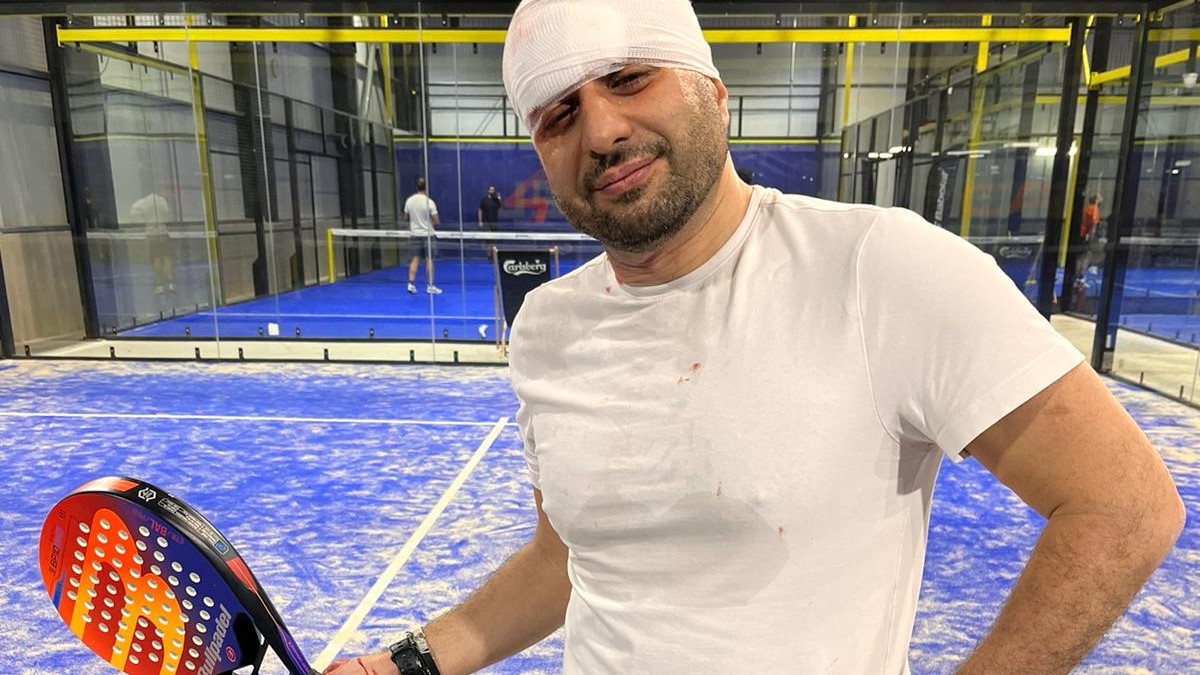
































































































 Miguel Lamperti: three tie-breaks and a return to the quarter-finals!
Miguel Lamperti: three tie-breaks and a return to the quarter-finals!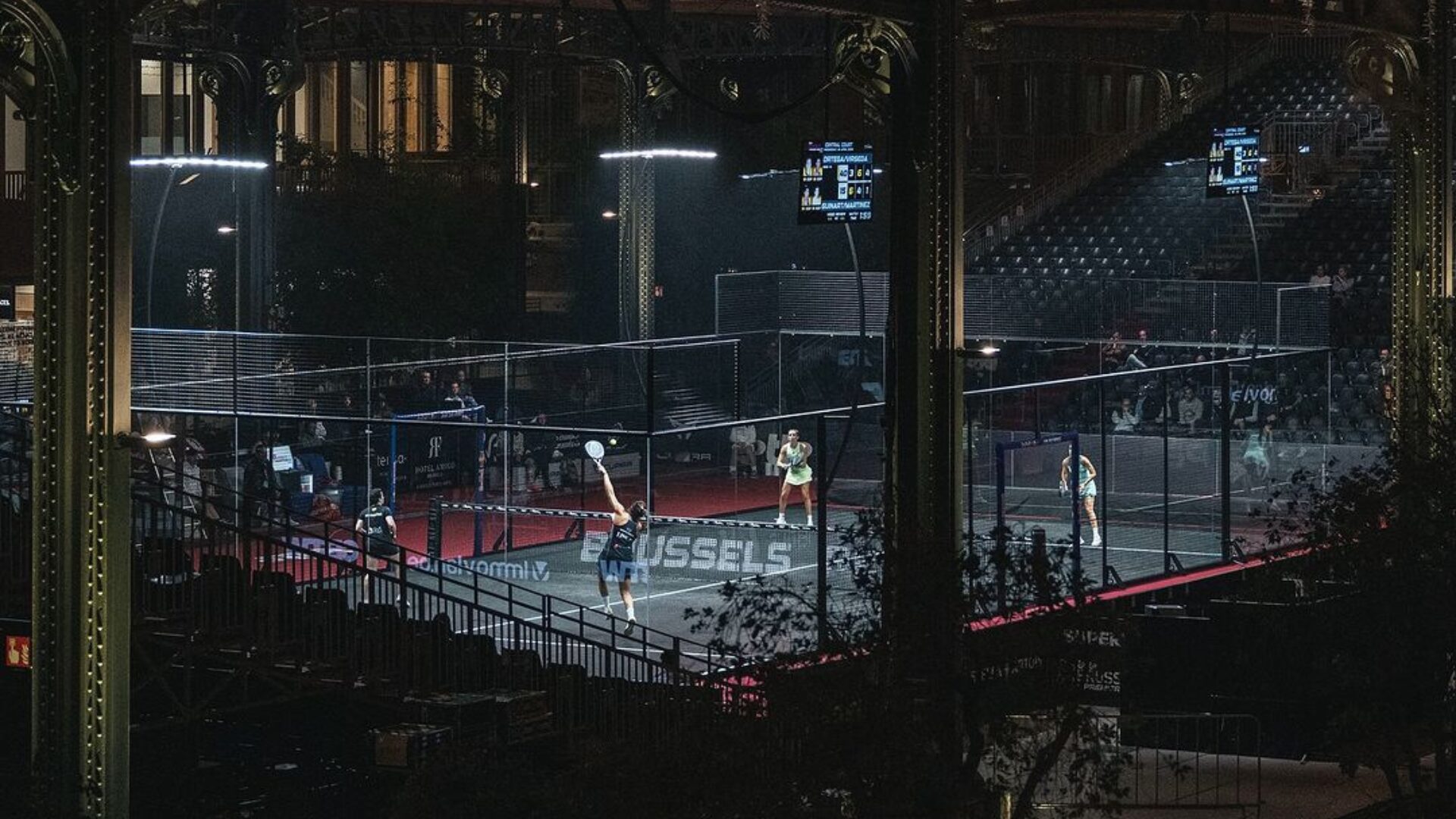 Premier Padel Brussels P2 – Place for the quarter-finals
Premier Padel Brussels P2 – Place for the quarter-finals Lucho Capra: “I have fun again on the track”
Lucho Capra: “I have fun again on the track” Guillaume Codron de Sud Padel : “A family project”
Guillaume Codron de Sud Padel : “A family project” Nallé Grinda: “Democratize the padel in the USA with PadelX "
Nallé Grinda: “Democratize the padel in the USA with PadelX " Simon Boissé: “We know that there are two nations in front of us”
Simon Boissé: “We know that there are two nations in front of us” Marie Maligo: “This period of frequent changes of partners was beneficial for me”
Marie Maligo: “This period of frequent changes of partners was beneficial for me” Gilles Moretton: “We will be able to put the padel at the level of tennis”
Gilles Moretton: “We will be able to put the padel at the level of tennis” Two P1000 doubled prize money approaching!
Two P1000 doubled prize money approaching! José Manuel Escin at the inauguration of Casa Padel DOS: “Finally, and thank you!”
José Manuel Escin at the inauguration of Casa Padel DOS: “Finally, and thank you!”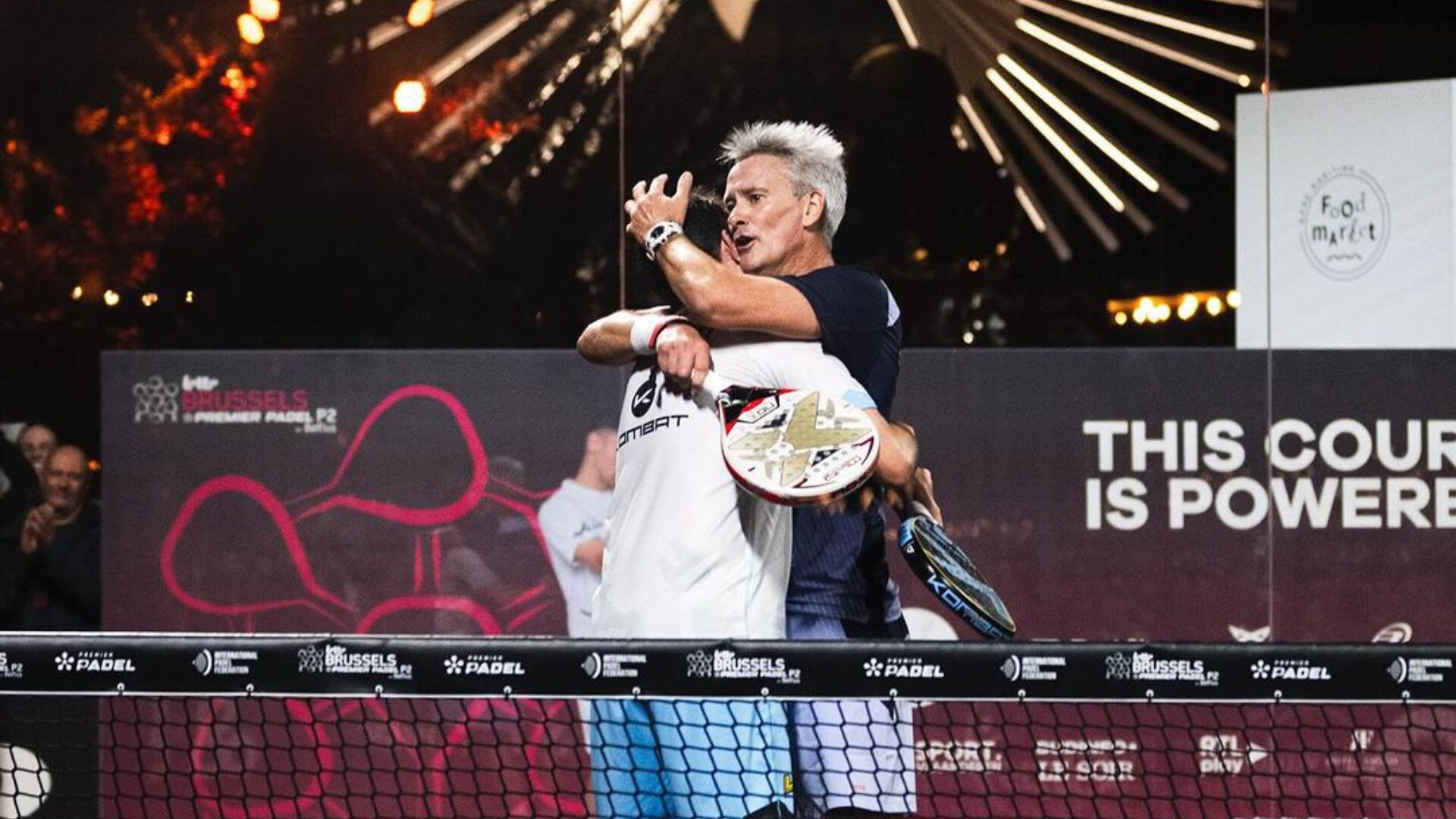 Big evening in Brussels with two seeded players on the mat, heckled number 1s…
Big evening in Brussels with two seeded players on the mat, heckled number 1s…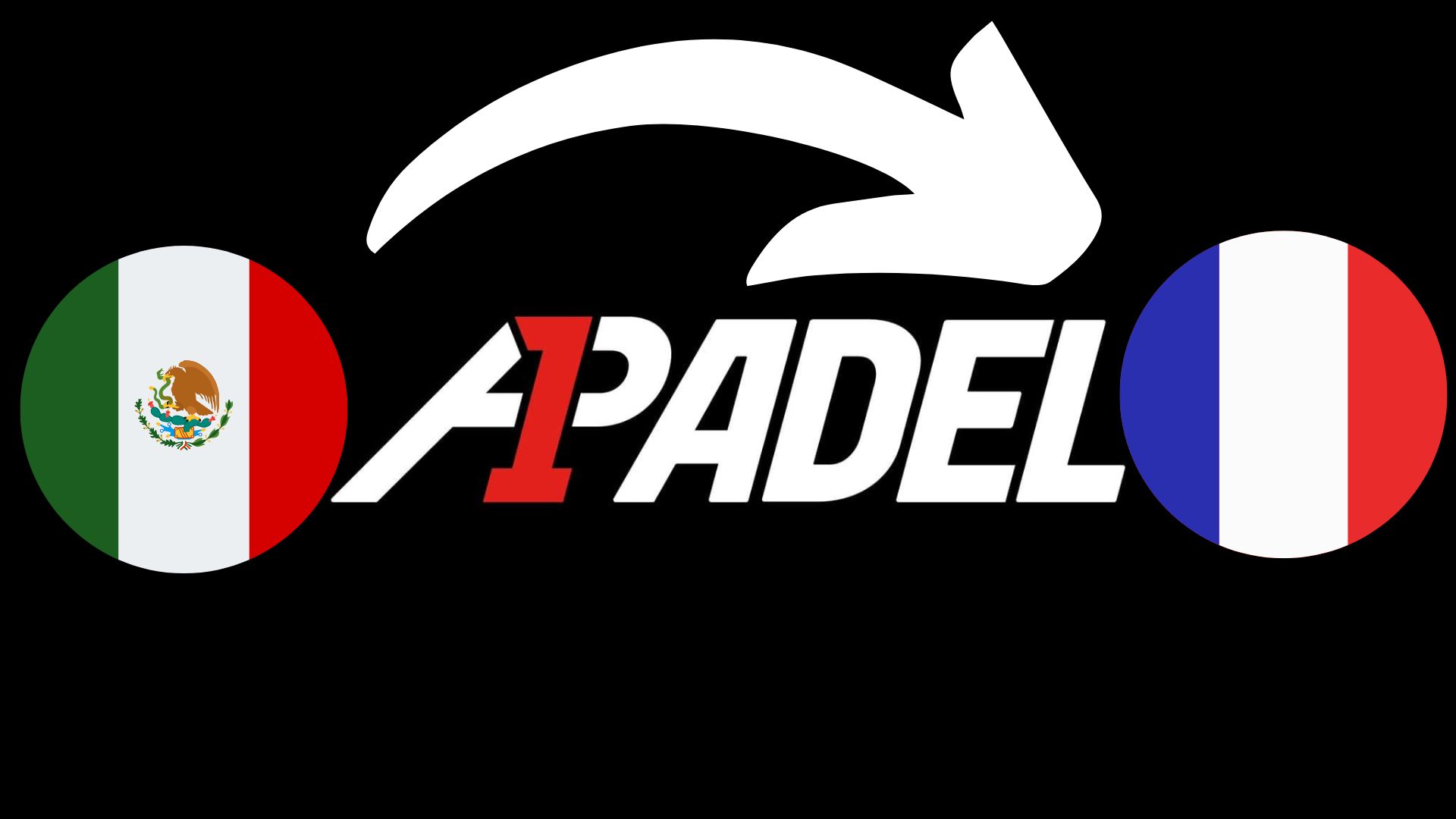 A1 Padel – the French Open replaces the Mexican Open on the calendar
A1 Padel – the French Open replaces the Mexican Open on the calendar 4 Fiberglass Padel Courts for The Ville de Paris: a choice that looks to the future
4 Fiberglass Padel Courts for The Ville de Paris: a choice that looks to the future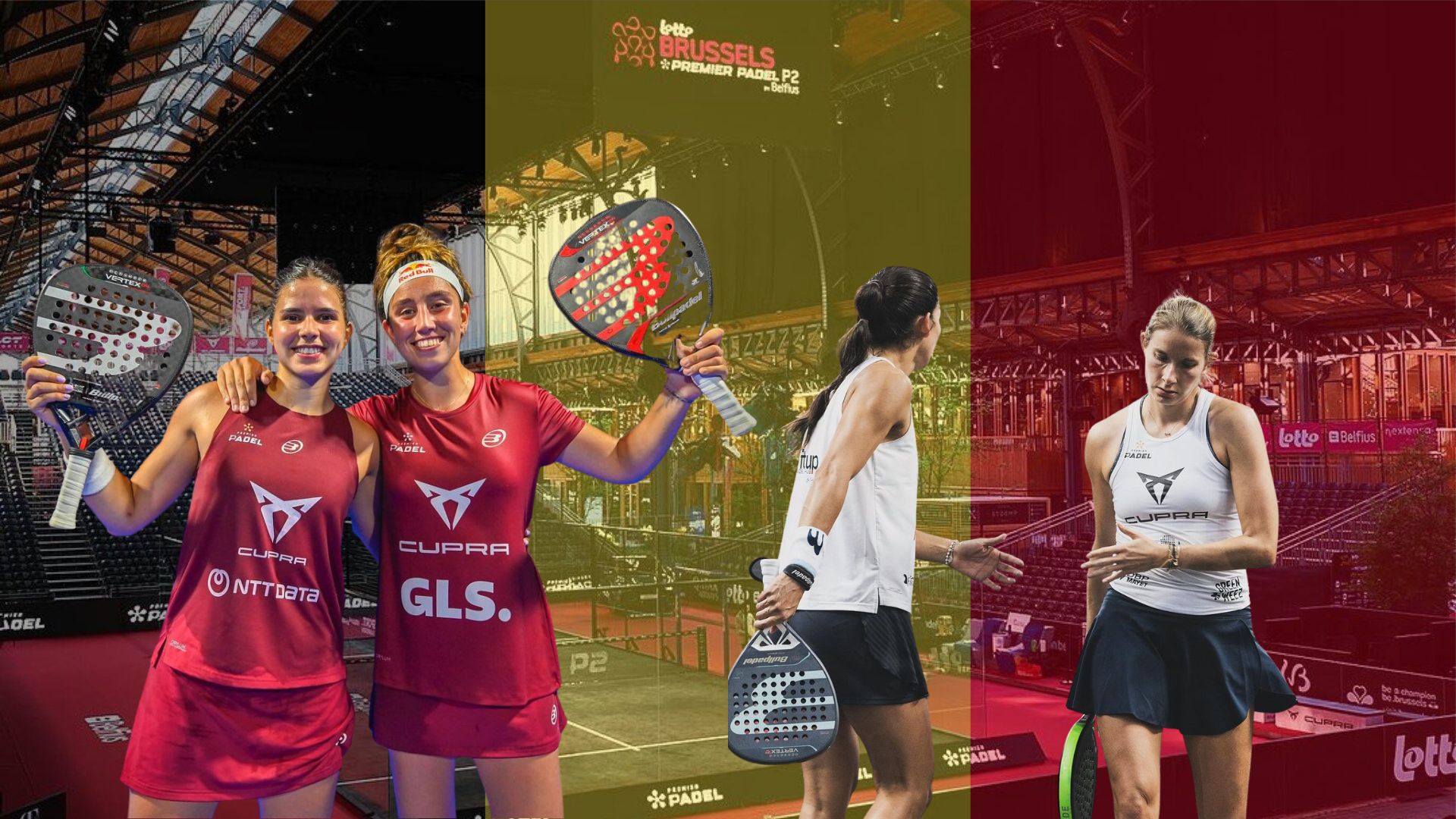 Brussels Premier Padel Brussels P2 – Collombon / Bidahorria falls against Brea / Gonzalez
Brussels Premier Padel Brussels P2 – Collombon / Bidahorria falls against Brea / Gonzalez Padel Score comes to Tahiti for American Express Padel Cup!
Padel Score comes to Tahiti for American Express Padel Cup! Do you know the Rafa Nadal Academy Tour?
Do you know the Rafa Nadal Academy Tour? Play at padel on his yacht? Possible for €233.000!
Play at padel on his yacht? Possible for €233.000! Our Top 10 training courses padel in France and Europe
Our Top 10 training courses padel in France and Europe At the heart of padel – Episode 25: Paul and Andoni answer your questions
At the heart of padel – Episode 25: Paul and Andoni answer your questions Tactical padel – What to do when faced with players who systematically stay at the bottom?
Tactical padel – What to do when faced with players who systematically stay at the bottom? The basic tactics of padel
The basic tactics of padel At the heart of padel – Episode 25: Paul and Andoni answer your questions
At the heart of padel – Episode 25: Paul and Andoni answer your questions At the heart of padel – Episode 23: defend the window well
At the heart of padel – Episode 23: defend the window well Prohibition on playing topless Padel : the reasons
Prohibition on playing topless Padel : the reasons FIP Tour – Going far from Europe, THE strategy to earn points!
FIP Tour – Going far from Europe, THE strategy to earn points! What is a good football player? padel ?
What is a good football player? padel ? “Lefties give me headaches when I play against them!”
“Lefties give me headaches when I play against them!” At the heart of padel – Episode 14: how to earn points in winter?
At the heart of padel – Episode 14: how to earn points in winter? A par 4 is always a winner...even if you manage to defend it!
A par 4 is always a winner...even if you manage to defend it! Carbon fiber VS fiberglass: what to choose?
Carbon fiber VS fiberglass: what to choose? How to effectively test a racket padel ?
How to effectively test a racket padel ? La padel to fight Parkinson's disease
La padel to fight Parkinson's disease Don't play with a cracked or broken racket, your body will thank you!
Don't play with a cracked or broken racket, your body will thank you! Michel Cymes: “The padel, physically, it’s serious!”
Michel Cymes: “The padel, physically, it’s serious!” Jeremy Gala: “Promote the padel among young people in Belgium remains a challenge”
Jeremy Gala: “Promote the padel among young people in Belgium remains a challenge” The French Touch Academy organizes its selection day Padel-Study
The French Touch Academy organizes its selection day Padel-Study Report on the detection and training of younger generations
Report on the detection and training of younger generations